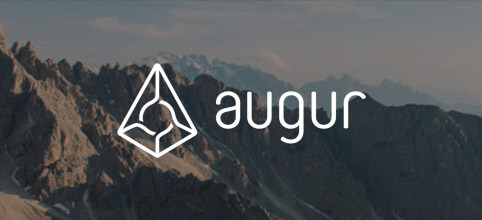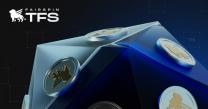 Introduction to Augur and Prediction Markets
Introduction to Augur and Prediction Markets 
Cover art/illustration via CryptoSlate. Image includes combined content which may include AI-generated content.
Augur’s Intellectual Legacy

The concept had first been articulated by Friedrich Hayek in his famous 1945 essay “The Use of Knowledge in Society” and further contextualized in James Surowiecki’s “The Wisdom of Crowds”, where he makes a point of how the weighted aggregate of the opinions and beliefs of diverse range of independent groups and individuals that integrate a plethora of different views produce better and much more accurate predictions than specialized panels of experts or individuals alone.
Augur aims to flesh out an engine that propels market efficiency by introducing mechanisms which cut through the semantic noise and misinformation. It plans to do so by forcing participants to clearly articulate their statements and binds them to their individually held beliefs.
The efficient market hypothesis assumes three forms — “soft”/weak, semi-strong and strong. The first claims that market prices already reflect all publically available information, the second that they also rapidly change to additionally accommodate new public information and the last, “strong” form, that prices instantly reflect also the hidden “insider” information.
As a meta-tool meant to absorb the advantageous qualities of all already existing tools while leaving out their disadvantageous ones, Augur assumes the “strong” form as “insider” information would inevitably be extracted in the aggregate sum of the whole. Another obvious initial use case which presents itself is an indirect mechanism for shorting of other assets. In fact, prediction markets as such can be seen as a generalization of all derivatives.
Nassim Nicholas Taleb, in his Medium post on Bitcoin, resounds a similar sentiment:
Somehow, under scale transformation, emerges a miraculous effect: rational markets do not require any individual trader to be rational. In fact they work well under zero-intelligence – a zero intelligence crowd, under the right design, works better than a Soviet-style management composed to maximally intelligent humans.
However, Surowiecki himself highlights three key criteria which separate ‘wise’ crowds plain ‘crowd psychology’:
- a diversity of information,
- independence of decision,
- decentralization of organization.
Conditions that current blockchain technologies seem capable of satisfying and Augur stands out among prediction market platforms not only in that it is the longest standing and most matured among them, but also emerging from the background of solid fundamental-theoretical research (drawing much upon the work of Kenneth Arrow and Gerard Debreu in their developing the complete market model – a market which assumes frictionless transactions, which in turn condition perfect competitiveness of which perfect information is an emergent property).
Another distinctive feature of Augur that makes it different from other prediction markets is its concurrent evolution with the Ethereum platform below it and its emphasis on strong decentralization is prerequisite for actualizing the potential of prediction markets as envisioned by Friedrich Hayek.
History and Background

Augur itself was founded in 2015 by Jack Peterson (who wrote the middleware JavaScript API and administers the hosted nodes) and Joey Krug (both of whom can be found on the official Discord), launching as one of the very first ICOs on the Ethereum platform.
Peterson has a relevant academic background in quantitative biology and holds a Ph.D. in biophysics, while Joey Krug is co-chief investment officer at Pantera Capital, a crypto-assets hedge fund. Tomas Priecinsky, who previously worked on designing the Intrade UI, is among the front-end developers.
Among project advisers, one finds such names as Intrade founder Ron Bernstein, economics professor Robin Hanson (creator of the concept of futarchy, a proposed system of government where elected government officials define the measures of welfare, and prediction markets determine the most effective policies) and Ethereum founder Vitalik Buterin.

The mainnet release of the first official Augur trading market is scheduled for the first half of 2018 (final audits in the next three weeks, although delays and postponements are commonplace) and said to start with a bug bounty market inquiring whether there will be a critical vulnerability discovered in Augur by a certain date.
This also spotlights another feature of prediction markets — the weight of the wager itself causing the event in question, and taken to its extreme, giving rise to what is known as political assassination markets.
On 21th of February, the team made the following statement in their official Discord channel regarding the official launch date target:
It depends on what the results of the audit are for one. I doubt the audit fixes will take any longer than a couple weeks personally. Aside from that we have to complete the actual UI still and do some reasonable testing of it end to end. We may encounter problems or realize theres something we still have to do. Thats very common in software development.
Additionally, the team added:
No one is saying its impossible that bug bounty happens in March, but if we promised something like that publicly, then our goal becomes releasing in March instead of releasing a MVP bug bounty. If you have reservations about whether we’re actually trying to get this out I encourage you to look at the AugurProject on GitHub and note the velocity of code being written in all of the repos.
And even though their subreddit is relatively small (accounting for over 7 thousand subscribers) the statistics at their Github repository indicate active development and hourly updates.
Market Mechanics and Economic Model
The way all this works on the Augur platform is a market maker sets the event end time and chooses a designated reporter to report the outcome of the event. There is support for three types of events — binary (yes/no outcomes), categorical (multiple discrete outcomes) and scalar (defined upper and lower boundaries).
The reporter’s report can be disputed by the community to the risk of losses in both staked collateral and reputation. Next, the market creator chooses a resolution source to be used for determining the outcome — this may simply be “common knowledge”, a specific outlet or an endpoint API.
The market creator specifies a creator fee as parameter (1% by default) which is the fee paid by traders who settle with the contract and posts two bonds, paid in ETH and REP which are returned back to him should everything go smooth from market creation to resolution (except of course for gas expenditures).
The native REP token is needed only by market creators and reporters, while the possible outcomes of an event are traded in sets of outcome shares (each corresponding to one unit of numeraire) created by Augur’s on-contract matching engine as needed.
The fees are essentially split 50/50 between market makers and REP token holders.
Every market and REP tokens belong to a Universe – initially at launch there is only the Genesis Universe, but in the rare event of a fork where REP holders post increasingly larger bonds to dispute proposed outcomes, if these bonds reach a certain threshold Reputation may split into multiple versions of Child Universe outcomes and token holders must migrate their tokens to one of the versions (for example, if it is a binary type market, the outcome Universes can be three – yes, no or invalid).
The Parent Universe is meanwhile locked, disabling the creation of new markets until the Fork Phase finalizes. By the time the resolution concludes, those tokens not corresponding to the real-world outcomes would quickly become worthless as nobody will participate in prediction markets unless confident they can resolve to befit reality.
- A more detailed technical overview can be found in the newly updated white paper here.
- Augur beta can be tried here (connects to Augur Node and Rinkeby testnet).
- Weekly reports on development updates can be found here.
- Specific questions are covered on the Augur Stack Exchange.
Where to Buy/Trade
Augur’s REP token is traded on most major and smaller exchanges (e.g., Kraken, Poloniex, Bittrex, etc.) with current price gravitating around 50 at its recent spike in January last month). The main Augur centric exchange, however, is Paradex — an ERC-20 token trading DEX using the 0x protocol (trading is off-chain while settlement takes place on-chain), with minimal fees and no cumbersome registration and verification steps necessary (not even e-mail, just a browser integrated MetaMask wallet).
For more information on Augur, including price, market cap, social media links, and technical information, check out our Augur coin profile or watch the video below:

























































